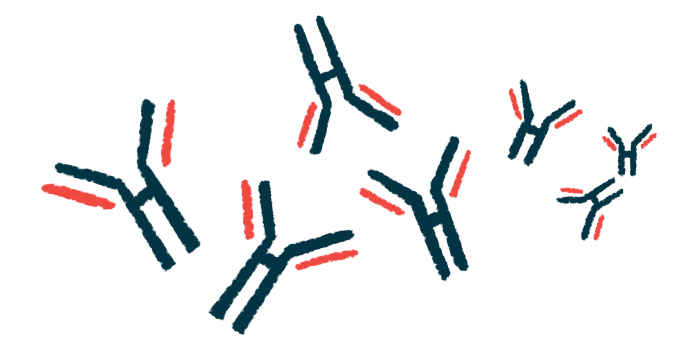Immunomodulators reduced anti-Myozyme antibodies, study shows
‘Prolonged immune suppression’ may be needed for some, researchers say

An immune system modulatory regimen effectively reduced levels of antibodies against Myozyme (alglucosidase alfa), an enzyme replacement therapy (ERT) for Pompe disease, in patients with low levels of acid alpha-glucosidase (GAA) enzyme.
That’s according to data from a Phase 4 study (NCT02525172), which assessed such a regimen in patients with high levels of anti-drug antibodies.
“The findings advocate for personalized immunogenicity risk assessments to enhance clinical outcomes,” The researchers wrote. “In some cases, prolonged immune suppression may be necessary.” Immunogenicity refers to the ability to induce an immune response.
The study, “Optimizing treatment outcomes: immune tolerance induction in Pompe disease patients undergoing enzyme replacement therapy,” was published in the journal Frontiers in Neurology.
Pompe disease is caused by mutations in the GAA gene, resulting in low or no levels of functional GAA enzyme. This enzyme is required to break down a complex sugar called glycogen into glucose, a simpler molecule the body uses to obtain energy, particularly muscle cells.
Higher Myozyme dose tied to higher HSAT risk
Sanofi‘s Myozyme, marketed as Lumizyme in the U.S., is the first ERT , a type of treatment that provides a functional version of the GAA enzyme, approved for Pompe disease. However, ERT may lead to the production of antibodies against the administered enzyme that can render the treatment ineffective.
So-called high and sustained antibody titer (HSAT) against GAA is more common in patients who completely lack their own GAA enzyme, called cross-reactive immunologic material (CRIM)-negative. However, patients who can make some GAA, called CRIM-positive, may also develop HSAT.
In CRIM-negative patients, an immunotherapy regimen is often initiated to avoid the effects of HSAT. The same approach may also be used in those who are CRIM-positive and are at high risk of anti-drug antibodies.
In this Sanofi-funded study, researchers at the National Taiwan University Hospital assessed the efficacy of medications to induce immune tolerance in CRIM-positive patients, with high levels of anti-drug antibodies and clinical decline.
Eight patients participated in the study, five with classic infantile-onset Pompe disease (IOPD), median age 1.7, and three with late-onset disease (LOPD), median age 10.2. They all had an HSAT of at least 1:12,800, and all met the predefined criteria for clinical motor decline or suboptimal treatment response, requiring immune tolerance induction (ITI). The ITI regimen included bortezomib, rituximab, methotrexate, and intravenous (into-the-vein) immunoglobulin.
A higher initial Myozyme dosage — 40 mg/kg once every two weeks or once weekly — was associated with a higher risk for HSAT, compared with a standard dosage of 20 mg/kg once every two weeks (50% vs. 6.8%).
After six months of immunomodulatory medication, the patients’ median antibody titer significantly decreased to 1:1,600, with reduced anti-drug antibodies in three patients lasting as long as 4.5 years. One participant died suddenly at age 16, six years after ITI, which the clinicians attributed to a seizure or a cardiac event. The remaining patients transitioned to new forms of therapeutic GAA within a year.
Blood levels of creatine kinase, a marker of muscle damage, either stabilized or decreased.
Four patients maintained levels of urinary glucose tetrasaccharide, a biomarker of glycogen accumulation and tissue damage, while the remaining four showed increases. No patient showed notable worsening of respiratory or motor functions.
Overall, three serious adverse events were reported: acute ear infection and pneumonia with respiratory distress in the same patient, and an allergic reaction to rituximab in another participant. These events were considered to be directly or potentially related to the ITI medications used. No participant withdrew from the study.
“ITI therapy effectively reduces ADA [anti-drug antibodies] levels in CRIM-positive Pompe disease patients with established high ADA titers,” the researchers wrote, noting that the study underscored the importance of monitoring for the presence of these antibodies and timely initiation of ITI.
“Further research with larger, multicenter, and more homogeneous cohorts [groups of patients] is essential to validate our findings and assess the efficacy of ITI therapy,” they wrote. “Such research endeavors will facilitate the development of more efficient, tailored treatment regimens for this complex condition.”







